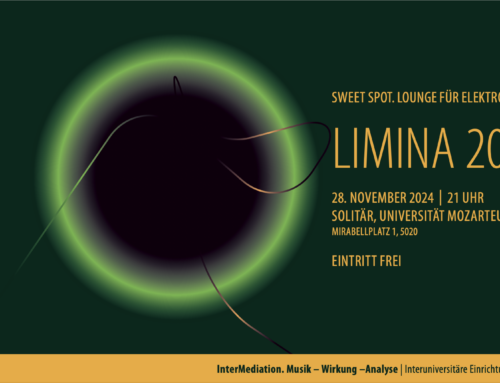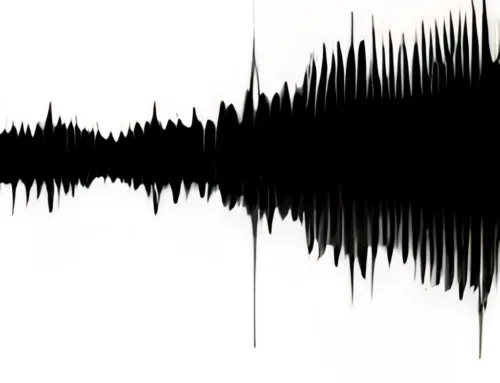| 08:00 | nat_sim | Artem Slesarev & Ilya Duganov |
| 08:30 | Together we Sing | Clàudia Ferrando & daz disley |
| 09:00 | If one waits long enough | Tibor Kovács |
| 09:30 | Sustentare | Tobías Álvarez |
| 10:00 | nat_sim | Artem Slesarev & Ilya Duganov |
| 10:30 | Together we Sing | Clàudia Ferrando & daz disley |
| 11:00 | If one waits long enough | Tibor Kovács |
| 11:30 | Sustentare | Tobías Álvarez |
| 12:00 | nat_sim | Artem Slesarev & Ilya Duganov |
| 12:30 | Together we Sing | Clàudia Ferrando & daz disley |
| 13:00 | If one waits long enough | Tibor Kovács |
| 13:30 | Sustentare | Tobías Álvarez |
| 14:00 | nat_sim | Artem Slesarev & Ilya Duganov |
| 14:30 | Together we Sing | Clàudia Ferrando & daz disley |
| 15:00 | If one waits long enough | Tibor Kovács |
| 15:30 | Sustentare | Tobías Álvarez |
| 16:00 | nat_sim | Artem Slesarev & Ilya Duganov |
| 16:30 | Together we Sing | Clàudia Ferrando & daz disley |
| 17:00 | If one waits long enough | Tibor Kovács |
| 17:30 | Sustentare | Tobías Álvarez |
| 18:00 | nat_sim | Artem Slesarev & Ilya Duganov |
| 18:30 | Together we Sing | Clàudia Ferrando & daz disley |
| 19:00 | If one waits long enough | Tibor Kovács |
| 19:30 | Sustentare | Tobías Álvarez |
Artem SLESAREV (1995), Paris
Ilya Duganov (1989), Paris, multimedia artist and stage designer
nat.sim
How far can humans go in simulating natural processes?
This question became the starting point of our exploration. Driven by a natural curiosity, we developed a generative sound toolset designed to mimic the sonic behavior and characteristics of species native to the Salzburg region. By capturing and analyzing the spectral sound imprints of various species — including the Red-breasted Flycatcher, Iberian Chiffchaff, and local cicadas — we reverse-engineered their vocal patterns to create a custom sound engine built in MaxMSP. This toolset became the foundation and instrumentarium for composing the score for OPEN GARDEN: TIPPING POINTS.
Our piece aims to observe the delicate fluctuations of biofeedback within a natural ecosystem — where small shifts in one species‘ behavior can ripple outward, triggering sonic responses and inter-species interchanges. These micro-movements form a living library of musical gestures and tonal relationships that guide our compositional process. To articulate spatial relationships in sound, we will use the SPAT 5 library alongside flocking algorithms to simulate the natural movement and dispersion of sound sources within a shared acoustic space.

Red-breasted flycatcher spectral voice analysis
Clàudia FERRANDO, Catalan-born (1992), Hamburg-based, and coming from the field of dance, Clàudia works in sound-art with a focus on the influence of the body, and the politics of the body, in relation to both live and pre-recorded output.
Daz DISLEY, UK-born-(1977) and-based digital artist and performer, daz has a 20+ year track-record in creating and facilitating new work using public multi-speaker sound-systems.
Clàudia & daz together
The meeting-point of Clàudia and daz’s individual practices centres on the physicality of sound, and the influence of movement on musical composition. They regularly perform together in international settings, having most recently installed and inaugurated a brand-new performance-oriented surround-sound system at the Espai Cuixart Arts space, near Barcelona.
daz disley (https://dazdisley.co.uk)
Clàudia Ferrando (https://linktr.ee/clau.fp)
TOGETHER WE SING
“Starlings sing new songs when they grow-up in persistently polluted lands. Desires and sexualities shift. The relations of our bodies go far beyond the skin, stretching outwards to lands, waters, non-humans, ancestors, and those yet to come. We make one another in difficult conditions. What can we become? How can we dream of land-body desires when fossil fuel capitalism and colonialism continues to thrive?”
M Murphy – Lessons from Birdsong: Land/Body Desires in the Aftermath
Taking birdsong as a departure point we explore their relationships with environmental sounds, and noise pollution. Modern cities present a loud and cacophonic mixture of artificial vibrations: rumbling cars, electronic buzzes-and-bleeps, myriad voices and a diversity of language and tones. But what consideration is brought to other, non-human makers of sound in the environment? And where do we locate the crossover between that which is considered ‘sound’ and that which is instead relegated to the status of ‘noise’?
This work questions the hierarchies of sound in the built-environment, by asking: what if the human/non-human sonic power-relationships were not just simply inverted, but altogether considered differently?
Considering the paradox that humans find birdsongs relaxing, but human-made sounds put stress on birds.
It is well documented that during the 20th century, birdsong has changed in response to the environmental pressures associated with human-made sound. In some part this is an adaptation, such as by singing at higher volumes (placing physical stress on the animal), and in some part this might be seen as competition, such as when a bird might mimic the sounds of mobile phones as if the phone itself were a competitive partner-to-be of the bird’s intended song-recipient/potential-mate. Clearly, birds are pushed to respond, to compete, to be dominated by human intervention … but what if this dichotomy could be dissolved?
We participate, in a song, in a call-and-response, but we somehow mostly fail to respond to our cohabitees, and do-so without much apparent care for the implications this failure provokes – afterall, significant portions of birdsong revolve around mating.
We propose a new love song. A remixing of nature-and-artifice as a tipping point to explore our joint co-existence – from a perspective of responsiveness, rather than blunt assertiveness. What might result if birdsong shifted the way cars sound? What might result if our walking rhythms encompassed the beating wings of a passing pigeon rather than the buzzing sounds of the neighbour’s phone, or the grinding of a distant concrete mixer?
Using the sound-system as a series of modular triples, we will create a series of call-and-response scenes between birdsong and the built-environment, using field recordings made in the city. In challenging the “us-vs-them” dualities of the built sonic environment, we seek to create a new lovesong, and a synthetic potential being, neither natural nor man-made, but instead hinting at a way of thinking, acting, and perceiving differently in the environments we share.
Tibor Victor Hugo KOVÁCS (1996), deutscher Klangkünstler und Komponist
Nach Abschluss eines Studiums und anschließender Berufserfahrung im Bereich der Wirtschaftswissenschaften an der LMU München entschied er sich, sich der fortwährenden kreativen Erkundung und dem künstlerischen Ausdruck – insbesondere der Komposition – zu widmen.
Seit 2022 studiert er Komposition bei Prof. Achim Bornhöft an der Universität Mozarteum in Salzburg, wobei sein Schwerpunkt auf elektroakustischer Musik, Performance und interdisziplinären Projekten liegt. Seine kompositorische Praxis ist stark von seiner Meditationspraxis geprägt, die seine Wahrnehmung von Bewegung und Zeit formt. Diese Perspektive durchdringt seine Werke, in denen kleine Details vergrößert und umfassendere Konzepte verdichtet werden. Anstatt starren Vorstellungen zu folgen, lässt er den natürlichen Fluss der Musik entstehen und betrachtet jedes Werk als einzigartige Reflexion des Moments, in dem es geschaffen wurde. Neben seinem Studium nahm er an Meisterklassen und Workshops bei namhaften Komponisten wie Helmut Lachenmann, Alexander Schubert, Klaus Lang, Nik Bärtsch und Georgia Koumará teil. Sein Interesse an verschiedenen Formen des künstlerischen Ausdrucks führte ihn zu interdisziplinären Projekten im Theater und Tanz sowie zu Kollaborationen mit Musikern, Malern, Architekten und Designern. Zudem ist er in verschiedenen Formationen für elektronische Musikperformances aktiv.
Seine Werke wurden bei Festivals in ganz Europa ausgestellt und aufgeführt, darunter das Limina Festival, die Salzburger Festspiele, Divertimento Rondò 2024, die EXPO Anton Bruckner, der EXPO2025 Japan und weiteren.
If one waits long enough
Inspired by the subtle dynamics of natural recurrence, my proposal for the sweet spot: open garden installation explores dramatic tipping points – critical moments where minute shifts in feedback systems yield sudden, transformative changes. In feedback synthesis, such bifurcations occur when a slight variation in feedback parameters turns a stable oscillation into a new, unpredictable sonic state, suggesting that even small actions can trigger profound changes that shape the future.
The piece is constructed by recording and arranging sessions of self-patched, feedback-driven modular synthesizers that capture these sonic transformations. Following this, they will be spatialized for the suggested speaker setup.
Set against the evocative backdrop of Mirabellgarten in Salzburg, the installation invites listeners and viewers to reflect on how every action – much like a photographer’s or bird’s choice of a favored spot – creates a new state within an ever-evolving landscape. Just as chaos theory suggests that everything recurs in different variations, the work explores the idea that the tipping points created today, through the choices one makes, inevitably shape the future, altering the rhythms of both nature and society. And if one just waits long enough, these tipping points lend themselves to the most interesting outcomes, visually, sonically and philosphically.
Tobías ÁLVAREZ DI DESERIO, Composer & Sound artist
Born in London, UK (1996) and raised into a family of latin american artists, Tobías began studying music from an early age. He has lived and worked in the UK and in Mexico. As a creative mind he has dedicated himself to the composition of solo, chamber and orchestral instrumental music as well as electroacoustic music and sound design in an eclectic manner. He has also garnered experience in the field of artistic production as promoter, technician and organizer of concerts, music festivals, museum exhibits (multichannel setups) and other artistic oriented ventures. His main interests gravitate towards composition, musicological research, the development of music with new technologies, multimedia art as well as interdisciplinary artistic projects. As an academic, he teaches at a university level position and has published several articles as well as a dissertation on music technology.
SUSTENARE
This composition proposal engages with the concept of sustain: not merely in terms of conserving natural resources, but as a broader inquiry into what can be maintained, prolonged, or sustained both conceptually and sonically. It engages with the thresholds of endurance and decay: When does a material, organic or synthetic, reach the edge of its identity? At what point does it fracture, dissolve, or evolve into something entirely other? And how might these processes be translated into a physical-acoustic language within a musical narrative?
Thinking about these questions invites a generative approach to composition, where sonic materials unfold organically, shaped by processes of erosion, friction, and reformation. Morphological and synthesis analysis serve as primary tools, not only to shape timbre, but to interrogate the philosophical and ethical dimensions of material use: how we perceive, relate to, and reimagine the (re)sources at our disposal. Imagine for example the sound of glass turning to water, or the mechanical force of jet propellers dissolving into string tremolos. A continuous counterpoint and juxtaposition of these so-called imaginary or impossible arguments will entail an evolving structure of rhythmic and harmonic discourse.
Field recordings and constructed sounds drawn from urban and natural settings will provide the raw medium for sonic transformation. These will be sculpted using a broad palette of techniques from granular to spectral synthesis, together with processed acoustic instruments that morph into new timbres. Through this dialogue between electronic and acoustic sources, the work embraces multiplicity: of perception, of the resonances between the natural and the artificial and of matter itself.
This 10 minute piece will be realized in a 16-channel diffusion layout, activated through dynamic source-to-speaker configurations. Trajectories will move from outer to inner rings, sweeping across space using individual speaker assignments and grouped EQ modulation. Tools such as GRM Tools Spaces for vector diffusion and Ableton Live’s Surround Panning will shape spatial motion, while sound creation and manipulation will be carried out using Max for Live patches and a variety of FFT-based tools.


